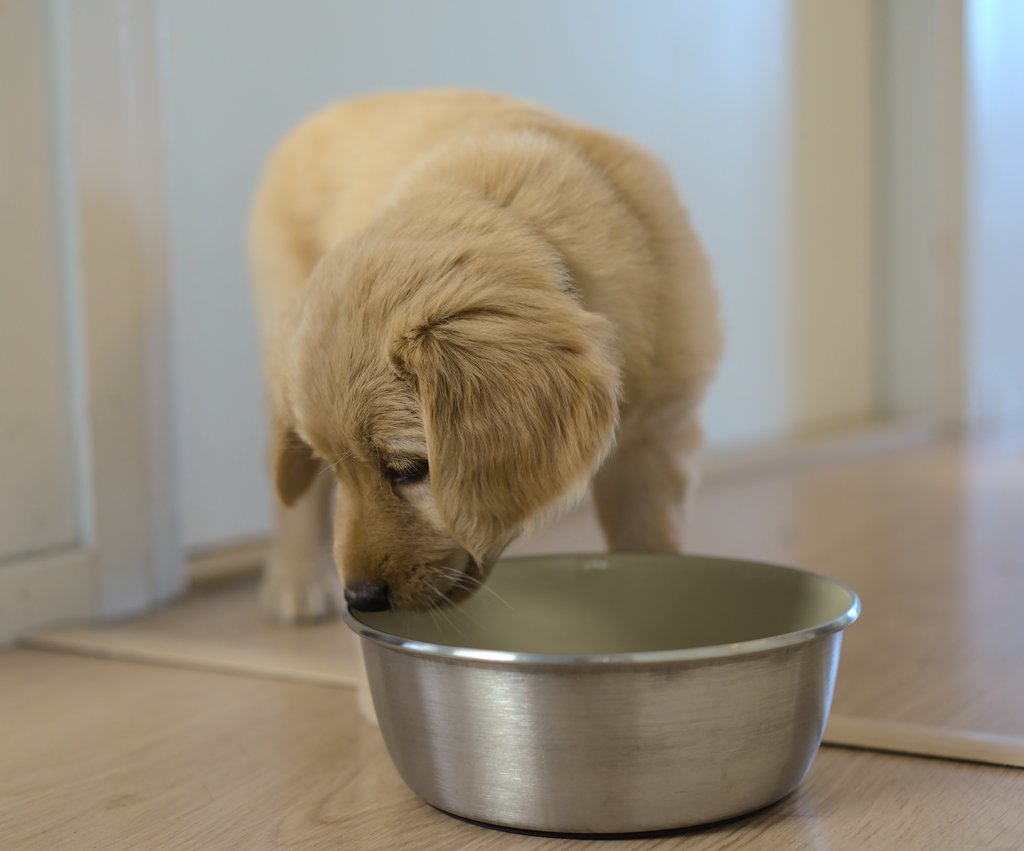Easy Weight Control for Dogs
Table of Contents

In this section, we will discover how to control your dog’s diet by measuring her weight on a weekly or monthly basis. A puppy growing up should be weighed on a weekly basis, whereas an adult with no problems with her weight can be weighed on a monthly basis.
4 Steps to Weighing Your Dog in Practice #
As stated above, measuring your dog’s kibble is a good starting point for taking control of her nutrition. At the same time you probably also realised that the quantities provided by dog food manufacturers should be treated as an upper bound. The next important factor of course is the weight of the dog itself and an easy way to measure her weight is to use a bathroom scale.
This solution will work as long as you’re able to pick up your dog and step on the scale with her, but it is not a very practical solution with a grown up Hovawart for example. It is, however, important that you know how much your dog weighs, especially if you own a large dog, since extra weight will lead into health problems later on.
Many veterinarians will let you use their professional scale for free, if you ask them. If they do, it is a good indicator that they have your pet’s best interest in mind, rather then their wallet’s.
To weigh your dog with the help of a bathroom scale, you need to do the following:
- Step on the bathroom scale without your dog and note down your weight.
- Pick up the dog and step on the scale with her and note down your combined weight.
- Subtract your weight from the combined weight.
- Mark down the result and date.
We know that doing this every week may seem cumbersome, but this effort will guarantee that your dog is well-fed and not getting obese over time. Please note that your dog’s weight may fluctuate somewhat depending at which time of the day you do the weigh-in. If you have set meal times and you weigh your dog every week on the same day and time, the results will be more predictable as well. As stated above, this is not rocket science, but does require a bit of effort on your part.
Help! My dog’s gaining weight, what should I do? #
If you weigh your dog and you discover that your dog is gaining weight, or is downright obese, you should take corrective action before her weight turns into a serious health problem.
Having read the earlier section on measuring portions for your dog’s mealtimes, you know that you will need to do some math to reduce her portions.
Also please make sure that all the treats you are potentially giving her do not add up skewing her diet. Lastly, it is important that your dog has regular mealtimes as we learned in an earlier section.
These three things will be enough for you to control your dog’s weight and all it requires is consistency, as does anything that has to do with dog ownership.
What’s next? #
In this and the previous two sections we covered the basics of dog nutrition, which build on the three pillars of:
- regular mealtimes
- right portions of quality kibble
- and regular weigh-ins.
In the next section we will look at things that are dangerous for dogs to eat.